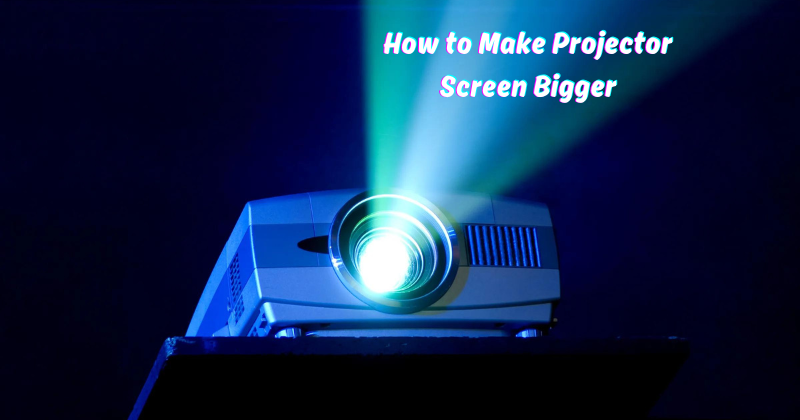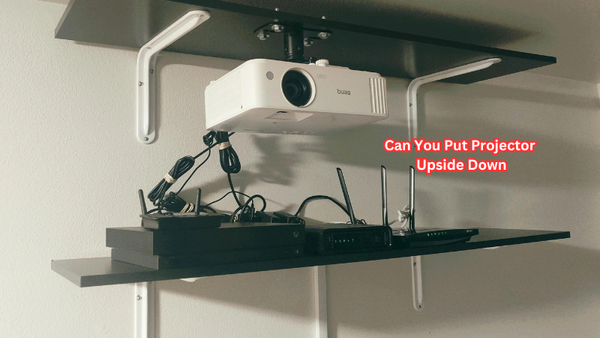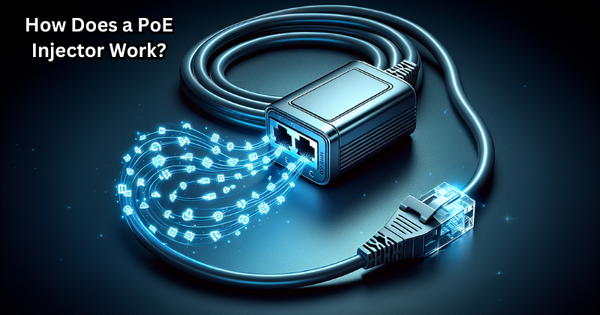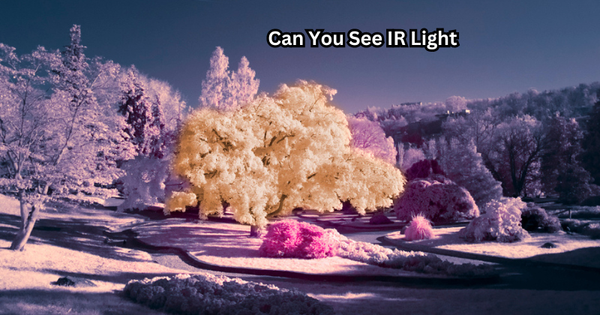Expanding the size of your projector screen enhances the cinematic experience, transforming ordinary movie nights into immersive, larger-than-life adventures. Increasing the screen size lets you enjoy vivid visuals and captivating details, turning any space into a home theater.
For presentations, gaming, or simply indulging in your favorite films, enlarging the projector screen creates a more engaging and dynamic viewing environment.
This guide explores practical methods to achieve a bigger projection, from adjusting projector placement and screen dimensions to utilizing advanced technologies. Discover how to optimize your setup, unlock larger-than-ever visuals, and elevate your entertainment or professional presentations to new dimensions.
Factors to Consider Before Making Your Projector Screen Bigger
When deciding on the size of your projector screen, several factors come into play. These include:
- Available space: The first and most obvious factor is the available space in the room where you plan to set up your projector.
- Projection distance: The distance between the projector and the screen also plays a crucial role in determining the screen size. A larger screen may require a longer projection distance.
- Aspect ratio: The aspect ratio of your projector and content also affects the recommended screen size. It is important to match the aspect ratios for optimal viewing experience.
- Screen material: Different screen materials have varying levels of reflectivity, which can impact brightness and clarity. This should be taken into consideration when selecting a larger screen size.
These factors should be carefully assessed to determine the best screen size for your setup and intended use.
How to Make Projector Screen Bigger: Methods
Depending on your setup and preferences, there are several ways to make your projector screen bigger. Here are some effective methods to consider:
Adjusting Projector Placement:
One of the simplest ways to enlarge the projector screen is by adjusting the projector's placement. By moving it closer or further away from the screen, you can increase or decrease the size of the projection.
If you move further away, the projection will appear larger. However, this can also result in a decrease in brightness and clarity. For the desired screen size, it is recommended to consult the projector's manual for optimal placement distance. On the other hand, moving closer to the screen will produce a smaller image with better brightness and sharpness.
Use a Larger Projection Surface:
Easy and cost-effective, using a larger projection surface is an ideal way to increase your screen size. This can be achieved by investing in a larger projector screen or utilizing available blank wall space.
If you have a retractable screen, simply pull it to its maximum length for a bigger display. For those projecting onto a wall, consider painting the designated area with specialized reflective paint for a seamless and larger projection surface.
The common options for large projection surfaces include:
- Fixed frame screens: These are stationary projector screens that come in various sizes and can be mounted onto a wall or ceiling.
- Motorized/Retractable screens: These can be raised or lowered electronically, making them easy to use and stored away when not in use.
- DIY solution with fabric: For a more budget-friendly option, consider using a white fabric with high reflectivity as your projection surface. You can use hooks or grommets to hang the fabric for a quick and easy setup.
- Sheet: In a pinch, you can use a white bed sheet as your projection surface. However, this may result in less optimal image quality than specialized projector screens.
Do not compromise image quality is important, especially when increasing screen size. Investing in a good-quality projector and projection surface can make all the difference in achieving an impressive visual experience.
Utilize Advanced Technologies:
For those seeking the ultimate cinema experience, advanced technologies such as anamorphic lenses, ultra-short throw projectors, or edge blending can produce stunning visuals on a much larger scale.
Anamorphic lenses are designed to stretch the image horizontally, allowing for wider projections. Ultra-short throw projectors can be placed close to the screen, creating a larger image without moving the projector far away. Edge blending combines multiple projectors to create one seamless and enlarged display.
These advanced technologies may require a higher budget and technical expertise, but they can provide an unparalleled projector screen enlargement experience.
Use a True Zoom Lens:
Some projectors come with a true zoom lens function, which can increase the screen image size without affecting image quality. This is an ideal solution for those who want a bigger screen but do not have the space or budget for a larger projector. The zoom capability can be implemented through digital or optical means, enabling users to easily tailor the projection size to their needs.
Optical Zoom feature:
Optical zoom utilizes the lens to physically enlarge or shrink the image without losing quality. This is achieved by moving internal components within the projector and adjusting focal length and magnification.
Digital Zoom:
Digital zoom, on the other hand, enlarges or shrinks images through a software algorithm. While this method may be more convenient since it can be done remotely, it can decrease image quality due to pixilation and distortion.
It is recommended to use the optical zoom function whenever possible to ensure optimal image quality.
Get a Short-Throw Lens Projector:
Short-throw lens projectors are designed to produce large images with a shorter projection distance. This is ideal for those who want a bigger screen but have limited space in their room. Short-throw projectors can be placed closer to the screen, resulting in less distortion and brighter images than traditional projectors. Some Epson projector lens models offer a flexible zoom and throw ratio, allowing users to create a larger screen without sacrificing image quality.
Keystone Correction:
If your projector is tilted or placed at an angle, it can result in a distorted image. Keystone correction is a feature that digitally adjusts the image to correct this distortion and produce a straight and sharp projection. This can be useful when trying to enlarge the screen without physically moving the projector.
However, using keystone correction may also affect image quality, so using it sparingly and only when necessary is recommended.
Testing and Calibration of Projector
After implementing the above methods, testing and calibrating the projector to ensure optimal image quality is important. This can be done by adjusting the projector and the source device's focus, brightness, contrast, and color settings. If you do not do calibration, the image may appear distorted or washed out, defeating the purpose of increasing screen size.
It is also recommended to regularly clean and maintain the projector, including the lens and air filters, to prevent any decrease in image quality over time. Consulting the projector's manual for specific instructions on testing and calibration is highly advised.
The Benefits of a Larger Projector Screen
A larger projector screen creates an impressive impact on both personal and professional setups. The following are some key advantages of expanding your projection size:
- Enhanced visual experience: A bigger screen size translates to more immersive visuals, with greater detail and depth for an engaging experience.
- Improved viewing angle: A larger screen allows for a wider viewing angle, ensuring that everyone in the room can view the projection without compromising image quality.
- Better for presentations: A bigger screen is especially useful for professional presentations, with more space to display complex visuals and data.
- Ideal for gaming: Gaming enthusiasts can enjoy a more immersive experience with larger-than-life graphics that fill their field of vision.
If screen width is important to you, choosing the right projector screen size should be a top consideration when setting up your projection system. The next section outlines some key factors to consider when selecting a projector screen size.
Importance of Brightness and Lumens
As we increase the projection size, maintaining brightness and image clarity becomes crucial. The brightness of a projector is measured in lumens, with higher lumens resulting in brighter images. To ensure an optimal viewing experience, it is recommended to choose projectors with at least 3,000 lumens for regular use and up to 5,000 lumens for larger screen sizes.
This will also help compensate for any ambient light in the room that may affect image quality. Plus, a brighter projector can also extend the lifespan of its lamp. Screen resolution is also important when selecting a projector, as higher resolutions allow for sharper and more detailed images. The aspect ratio should also be considered, as this determines the width and height of the projected image.
FAQs
Can you adjust a projector?
Yes, most projectors come with various adjustments, such as lens zoom, focus, and keystone correction, to optimize image quality. Some advanced projectors also offer motorized adjustments for added convenience.
What is the size of a projector image?
The size of a projector image can vary based on the projector's specifications and its distance from the screen. Short-throw projectors can create larger images with less projection distance compared to traditional projectors. It is recommended to consult the manufacturer's manual for specific measurements.
How do I increase the zoom on my projector?
The zoom function on a projector can be increased through the remote control or manually, depending on the model. Lens shift and keystone correction can also be used to adjust the size and shape of the image. Refer to the projector's manual for specific instructions on increasing zoom.
What is aspect ratio for projector screens?
Aspect ratio refers to the width and height of a projected image. Projectors' most common aspect ratios are 4:3 (traditional TV format) and 16:9 (widescreen format). Selecting a projector with an aspect ratio matching your desired screen size and content is important.
Conclusion
In conclusion, enlarging your projector screen adds a transformative dimension to your viewing experience, whether for cinematic enjoyment, gaming, or professional presentations. The outlined strategies offer a comprehensive approach, from adjusting projector placement and choosing the right screen to exploring advanced technologies and DIY solutions.
Adapting to your unique needs, these methods ensure an immersive and visually stunning display. As technology evolves, so do the possibilities for achieving larger-than-life projections, enhancing the versatility of your projector setup. Whether opting for short-throw projectors, motorized screens, or innovative DIY alternatives, the key lies in tailoring these solutions to your specific space and preferences.
Embrace the opportunities to optimize image quality, resolution, and screen size, turning any room into a dynamic and captivating visual space.





